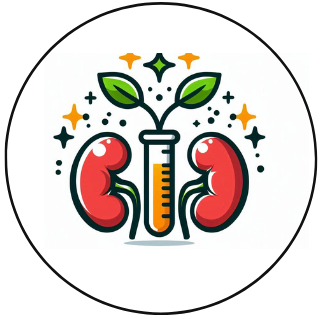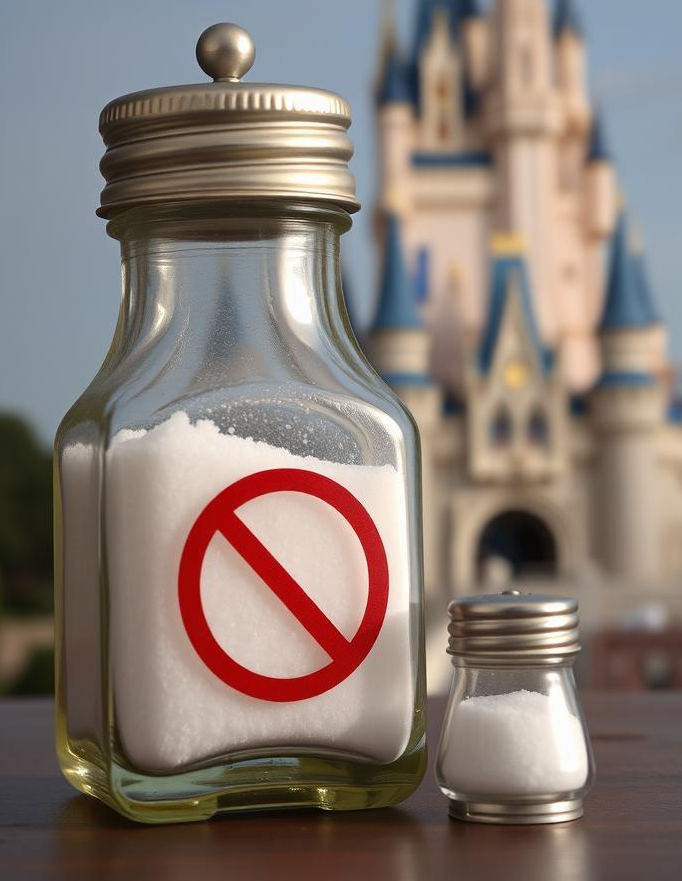Creating a Low-Sodium Diet Meal Plan for Kidney Health: Tips, Recipes, and Flavorful Alternatives
Maintaining a low-sodium diet is essential for kidney health, especially for those managing chronic kidney disease (CKD) or other kidney-related conditions. High sodium intake can strain the kidneys, increase blood pressure, and worsen kidney function over time. A thoughtful, flavorful, low-sodium meal plan can make a significant difference in supporting kidney health while still satisfying your taste buds. Below, we’ll discuss practical tips for creating a low-sodium meal plan, flavorful alternatives to salt, and suggest a few affiliate products that can support your journey.
Why Focus on a Low-Sodium Diet for Kidney Health?
For people with kidney disease or compromised kidney function, reducing sodium can:
- Decrease fluid buildup
- Lower blood pressure
- Minimize swelling and discomfort
- Slow down kidney damage progression
4 Tips for Creating a Low-Sodium Meal Plan
1. Prioritize Fresh, Whole Foods
Processed and packaged foods are often high in sodium. Focus on fresh ingredients such as fruits, vegetables, lean proteins, and whole grains. These are naturally lower in sodium and full of essential nutrients.
Consider using weekly meal prep containers, such as these found on this link. This makes it easier to prepare fresh meals in advance and avoid the temptation of processed foods.
2. Choose Herbs and Spices over Salt
There’s a world of flavors beyond salt! Try herbs like basil, rosemary, and thyme, or spices like garlic powder, black pepper, and paprika. Experiment with different combinations to find what flavors you enjoy.
We recommend a sodium-free or low-sodium seasoning blend. We have provided a link for those who are new to cooking without salt, or for those who want to experience more flavor.
3. Cook with Low-Sodium Broths and Sauces
Low-sodium broths, stocks, and sauces are excellent cooking bases. Look for products with 140 mg of sodium or less per serving. If you can’t find low-sodium versions, dilute regular products with water to reduce the sodium content.
We have included the following guide to sodium content:
- Sodium-free: Less than 5 mg of sodium per serving
- Very low sodium: 35 mg or less per serving
- Low sodium: 140 mg or less per serving
- Reduced sodium: At least 25% less sodium than the regular version of the product
I have included a link to low-sodium broths to consider for those who want a quick and convenient cooking base.
4. Read Labels Carefully
When grocery shopping, check food labels for sodium content. Opt for items labeled “no salt added” or “low sodium” and avoid those with more than 140 mg of sodium per serving.
The nutrition tracker in this link helps you track sodium intake in your food choices.
Sample Low-Sodium Meal Plan for Kidney Health
Here’s a simple, low-sodium meal plan to kickstart a week of kidney-friendly eating. Each meal is balanced, with limited sodium and a focus on kidney-supportive ingredients.
Breakfast
- Monday: Oatmeal with fresh berries and a handful of walnuts
- Tuesday: Greek yogurt (unsweetened) with sliced banana and a sprinkle of cinnamon
- Wednesday: Avocado toast on whole-grain bread, topped with a sprinkle of pepper and lime juice
- Thursday: Smoothie with spinach, blueberries, and a dash of unsweetened almond milk
- Friday: Scrambled eggs with diced bell peppers and onions (no salt added)
Lunch
- Monday: Quinoa salad with cucumbers, cherry tomatoes, and a splash of olive oil and vinegar
- Tuesday: Veggie wrap with hummus, cucumber, shredded carrots, and spinach on a low-sodium whole-grain tortilla
- Wednesday: Chicken breast over mixed greens with a few slices of orange for extra flavor
- Thursday: Baked sweet potato with a sprinkle of cumin and a side of steamed broccoli
- Friday: Lentil soup with garlic, celery, carrots, and low-sodium vegetable broth
Dinner
- Monday: Baked salmon with a lemon pepper rub, brown rice, and steamed asparagus
- Tuesday: Stuffed bell peppers with lean ground turkey, black beans, and unsalted spices
- Wednesday: Grilled chicken breast with a side of roasted Brussels sprouts and quinoa
- Thursday: Zucchini noodles with a homemade low-sodium marinara sauce and fresh basil
- Friday: Stir-fry with tofu, bell peppers, mushrooms, and broccoli in a garlic-ginger sauce (use reduced-sodium soy sauce or a low-sodium alternative)
This non-stick grill pan can make low-sodium grilling easy and reduce the need for added fats or oils.
Flavorful Alternatives to Salt
Adjusting to a low-sodium diet can feel like a challenge, but the right flavor boosters can keep your meals exciting and satisfying:
- Citrus Juices: Freshly squeezed lemon, lime, or orange juice can brighten up the flavor of nearly any dish.
- Vinegars: Balsamic, apple cider, and red wine vinegar add tanginess to salads, soups, and stews.
- Fresh Herbs: Cilantro, parsley, basil, and mint bring vibrant, fresh flavors without added salt.
- Aromatics: Garlic, onions, and shallots provide a savory depth, especially when sautéed.
- Pepper and Spices: Experiment with black pepper, red pepper flakes, paprika, and cayenne for a bit of heat and complexity.
Grow your own fresh herbs with this herb garden kit so you can have fresh herbs at home year-round, ensuring you always have flavorful, salt-free options.
Additional Tips to Stick to Your Low-Sodium Meal Plan
- Plan Ahead: Meal prepping can save time and reduce the temptation to order high-sodium takeout. Prep meals for the week on Sundays and store them in the refrigerator or freezer.
- Avoid the Salt Shaker: Replace your table salt with pepper, lemon juice, or a sodium-free seasoning blend. Check out this Flavor Shaker Set (my term 🙂 ) to keep your seasonings on hand for flavorful meals without risking your sodium intake.
- Stay Hydrated: Drinking enough water helps the kidneys flush out toxins, supporting better kidney function. Keep a water bottle handy and sip throughout the day. Remember to not overdo it. Use a hydration tracking water bottle to ensure you get the right amount of clean water throughout the day.
Wrap-Up
A low-sodium meal plan is one of the best ways to support kidney health and prevent further damage to kidney function. With fresh ingredients, flavorful herbs, and simple meal planning techniques, you can create delicious, kidney-friendly meals that keep your sodium levels in check.
If you’re looking for tools to help you get started, check out our recommended products above. Making kidney-conscious choices, such as choosing foods with 140 mg of sodium or less per serving every day, can go a long way in safeguarding your health.
Disclosure: Many of the links in this post are affiliate links. Purchasing through an affiliate links has no additional cost to you. It may give a small commission to kidneyfreshfuel.com, which allows us to continue to bring you quality information.
SEO Keywords: low-sodium diet, kidney health, low-sodium meal plan, kidney-friendly foods, kidney health recipes, sodium alternatives, flavor without salt

